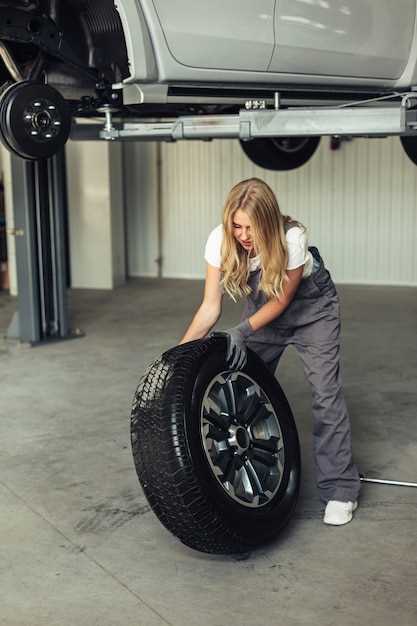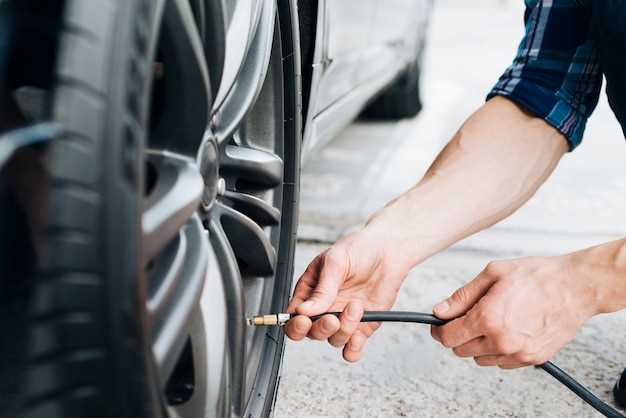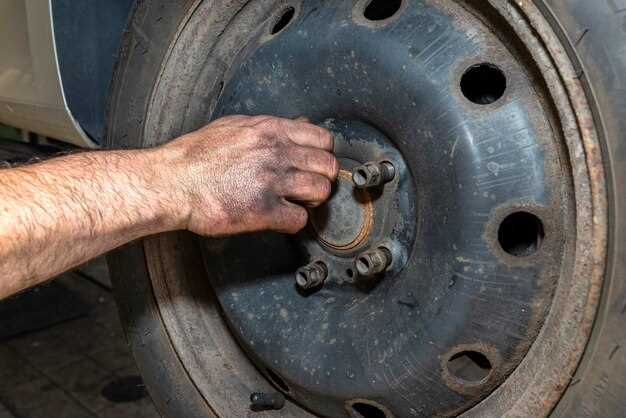How to Maintain Classic Car Tires

Maintaining tires on classic cars is essential for ensuring both safety and performance. These vehicles often carry a rich history and nostalgia, making proper care of their components crucial. The tires are the only part of the car that makes direct contact with the road, and their condition can significantly influence the driving experience.
One of the primary tips for tire maintenance is to regularly check tire pressure. Overinflated or underinflated tires can lead to uneven wear and potentially dangerous handling. It’s advisable to check the pressure at least once a month, especially before long drives. Proper inflation not only enhances safety but also improves fuel efficiency.
In addition to monitoring tire pressure, it’s important to inspect the tread depth and overall condition of the tires. Tread patterns should be clear and free from cracks or bulges. If the depth is below a certain threshold, the tires need to be replaced to ensure adequate grip and stability. Using these simple yet effective care practices can extend the life of your classic car’s tires and maintain its performance on the road.
Choosing the Right Classic Tires for Your Vehicle

Selecting the appropriate tires for your classic car is essential for both safety and performance. Classic vehicles often require tires that not only match their aesthetic but also provide the necessary care to handle unique driving conditions.
Firstly, consider the original specifications of your vehicle. Classic cars were designed with specific tire sizes and profiles. Refer to the owner’s manual or consult with classic car experts to ensure you choose tires that match these original specifications. Using the correct size helps maintain the car’s correct handling and appearance.
Another factor to consider is the type of tire. Classic car tires typically come in bias-ply and radial constructions. Bias-ply tires offer an authentic look and feel, while radial tires provide better traction and longevity. Assess your driving habits; if you intend to show the car, bias-ply may be suitable. For regular use, consider radial tires for improved performance.
Additionally, pay attention to tire composition. Classic tires are often made from softer rubber compounds, enhancing grip and ride comfort. However, this can lead to quicker wear, especially if the vehicle is frequently driven. Evaluate the tread life and performance characteristics of different tire brands to find a balance between authenticity and durability.
Finally, consider weather conditions when choosing tires. If you live in an area with varied climates, invest in tires that suit both wet and dry conditions. Some classic tires offer enhanced performance in inclement weather, which can significantly impact your driving experience.
In summary, selecting the right classic tires involves careful consideration of original specifications, tire type, composition, and weather suitability. Prioritizing these factors will ensure your classic vehicle not only looks great but also performs at its best on the road.
Regular Inspection and Maintenance Routines for Classic Tires
Maintaining classic tires requires diligent care to ensure their longevity and performance. Regular inspections should be conducted at least once a month or before any long drives. Begin by checking the tire pressure, as proper inflation is crucial for safe handling and fuel efficiency. Refer to the vehicle’s manual for the recommended pressure specific to classic models.
Visual inspections are equally important. Look for any signs of cracking, bulging, or uneven wear on the tread. These issues can indicate age-related deterioration or alignment problems. If you notice any abnormalities, consider replacing the tires to maintain safety.
Rotate the tires periodically to promote even wear. Depending on driving habits, a rotation every 5,000 to 7,500 miles is advisable. This practice helps extend the life of the tires and improves overall vehicle handling.
Cleaning the tires is a simple yet effective tip. Regularly wash them to remove dirt, brake dust, and road debris. Using a non-acidic cleaner will preserve the rubber’s integrity. After cleaning, applying a tire conditioner can help protect against UV damage and cracking.
Lastly, don’t forget to inspect the sidewalls for any signs of damage. Keeping your classic tires in optimal condition not only enhances safety but also preserves the aesthetic appeal of your vehicle. Adopting these regular inspection and maintenance routines will ensure your classic tires perform reliably for years to come.
Proper Storage Techniques for Longevity of Classic Tires

When it comes to preserving the integrity of classic tires, proper storage is essential. Here are some essential tips to ensure your classic tires remain in excellent condition.
First, select a suitable storage location that is dry, cool, and away from direct sunlight. Exposure to UV rays can deteriorate rubber compounds, leading to cracks and other forms of damage. An indoor space with stable temperatures between 50°F and 70°F is ideal for care.
Before storage, clean the tires thoroughly to remove dirt and debris. Use a mild soap solution and a soft brush to gently scrub the tire surface. This prevents contaminants from causing deterioration during storage.
For long-term storage, consider elevating the tires off the ground using tire cradles or wooden pallets. This practice helps avoid flat spotting, which can occur when tires sit stationary under their own weight for extended periods.
Additionally, if possible, slightly inflate the tires to their recommended pressure levels before storage. This helps maintain their shape and avoids deformation over time. However, avoid over-inflation, as this may lead to undue stress on the tire walls.
Finally, regularly inspect the stored tires for any signs of wear, such as cracking or bulging. Early detection allows for timely maintenance or replacement, ensuring your classic car remains safe and performative.
By following these tips, you can prolong the lifespan of your classic tires, ensuring they contribute to both the performance and aesthetic appeal of your cherished vehicle.



